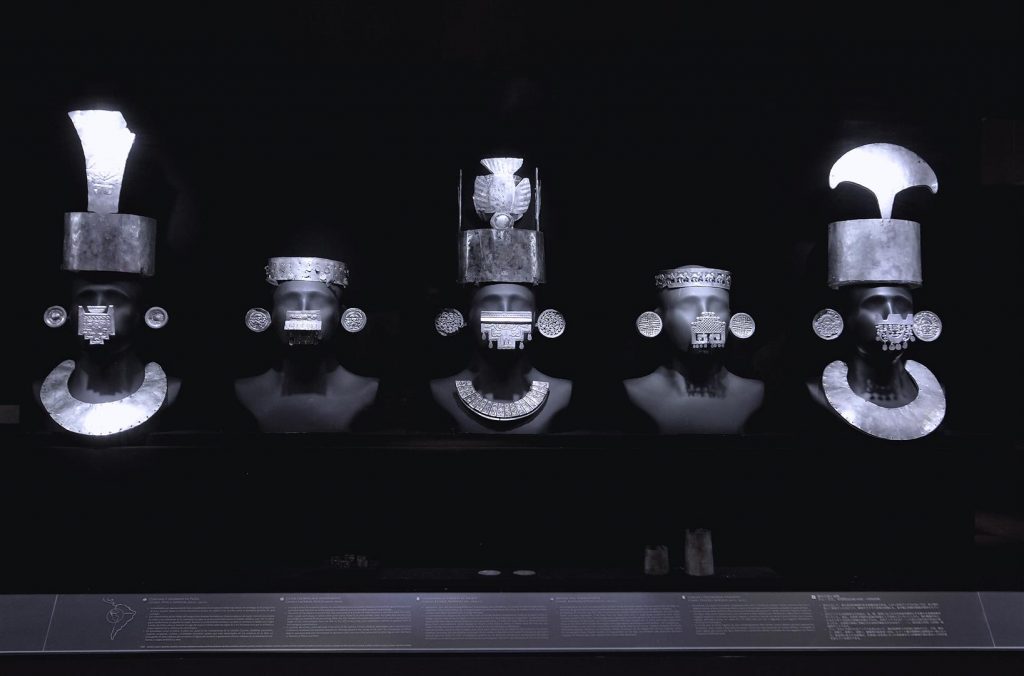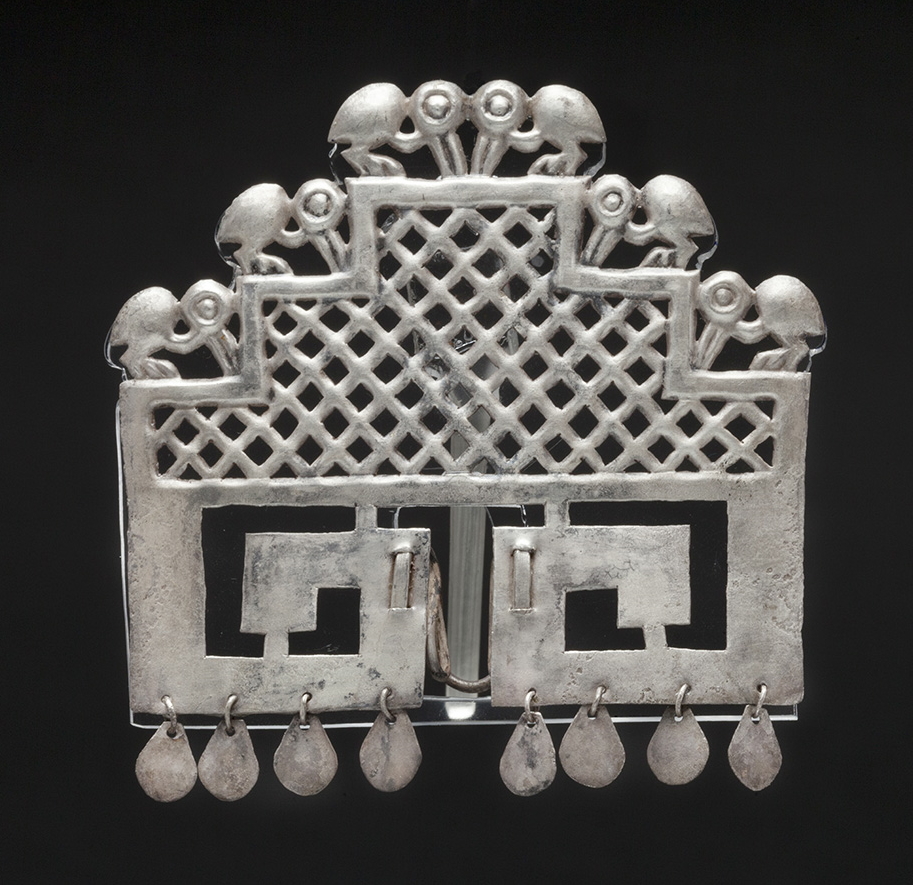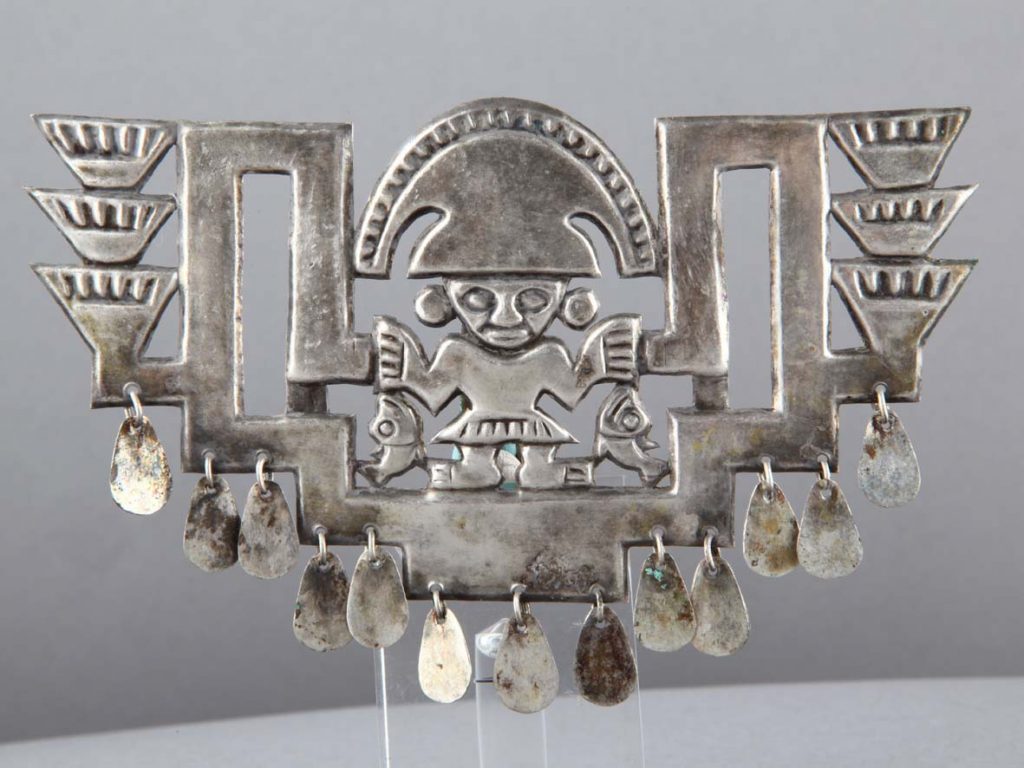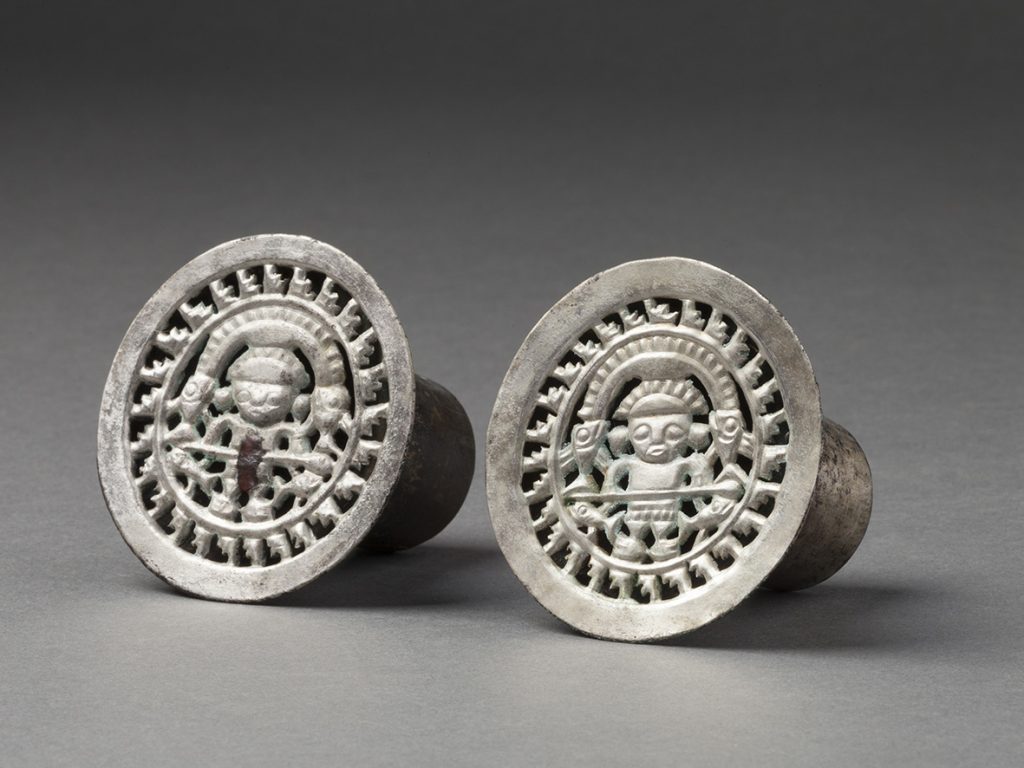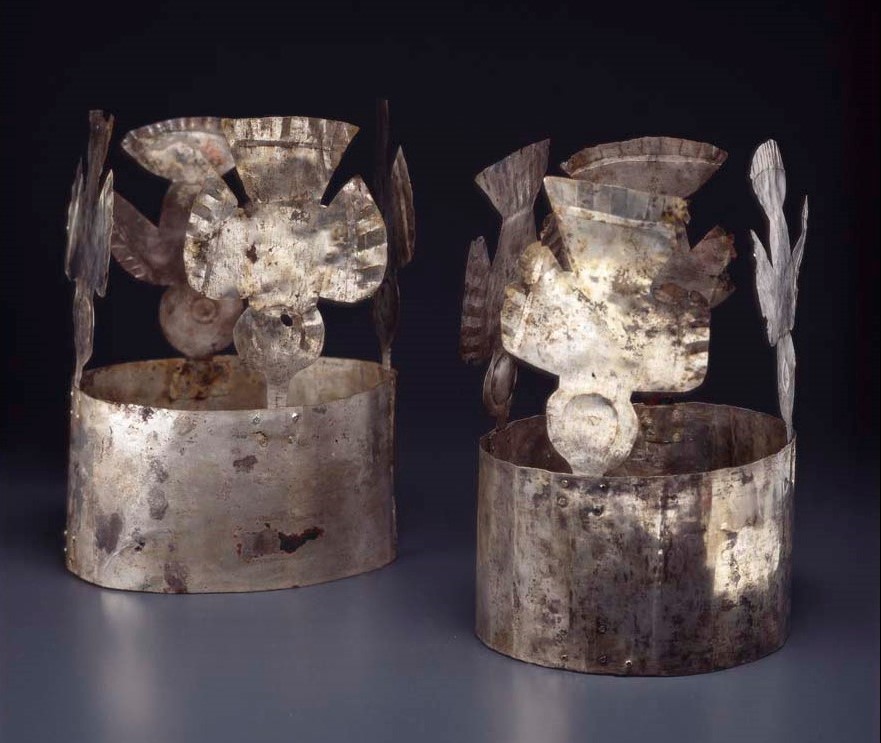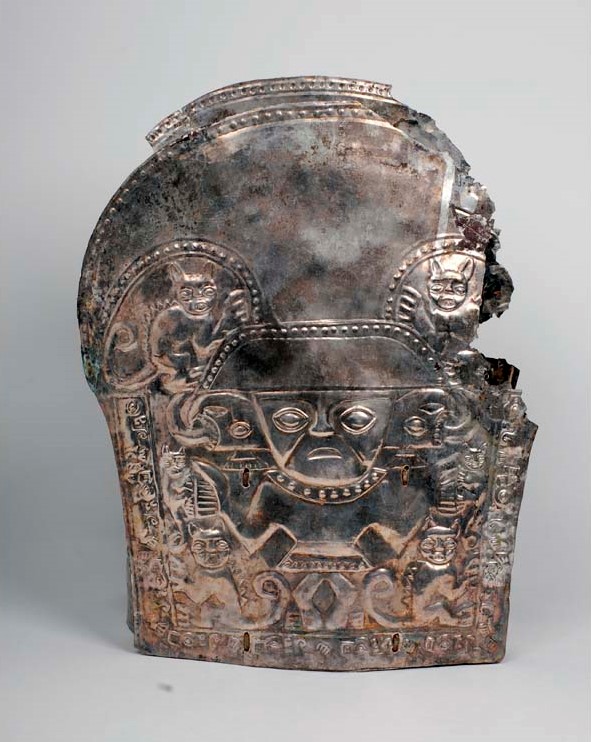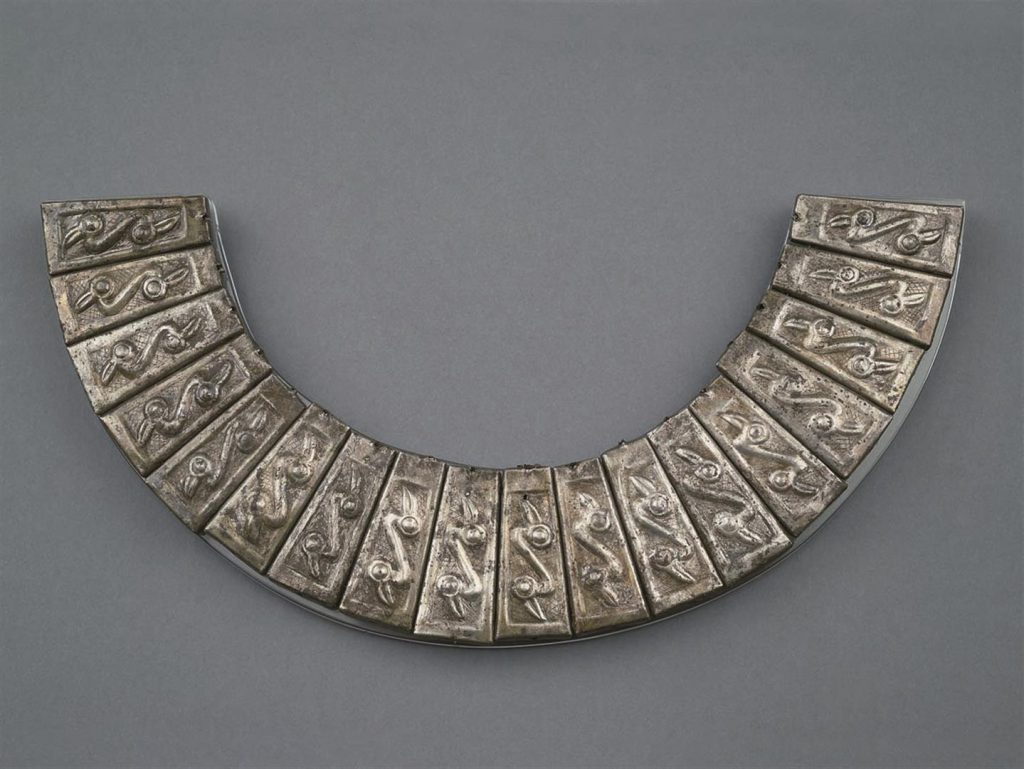Chimú Silver Crowns and Adornments
Room 12, Vitrine 144
Metal
Peruvian Northern Coast
Imperial Epoch (1300 AD – 1532 AD)
ML100416, ML100420, ML100422, ML100424-ML100426, ML100435, ML100604, ML100764, ML100765, ML100773-ML100781, ML100827-ML100830, ML100930, ML100931, ML100933, ML100949, ML100950, ML100965, ML100968, ML101019, ML101020, ML101458, ML101459, ML101534, ML101535, ML101651, ML101652, ML101655.
In today’s world, for economic reasons, we consider gold a precious metal. However, in ancient Peru gold and silver were accorded equal importance, while weavings and seashells such as Spondylus enjoyed equal prestige.
The attire of the leaders of ancient Peru was composed of a number of metal decorative elements made from gold, silver, copper and alloys. In nature, silver is not easily found in its pure metallic state, and great skill and technical knowledge are required for its processing. Silver was first worked a thousand years before Christ, but it was during the height of the Chimú Empire, from the 12th to the 15th century, that such exploitation reached its greatest level of technological sophistication.
In societies like Chimú, silver was used in the attire of the nobility. Crowns, diadems, breastplates, ear ornaments, nose ornaments, necklaces and bracelets formed the offerings placed in the tombs of the elite. The iconography on these objects was associated with the ancestor or deceased ruler, who would be surrounded by other figures with the forms or features of felines and birds.
